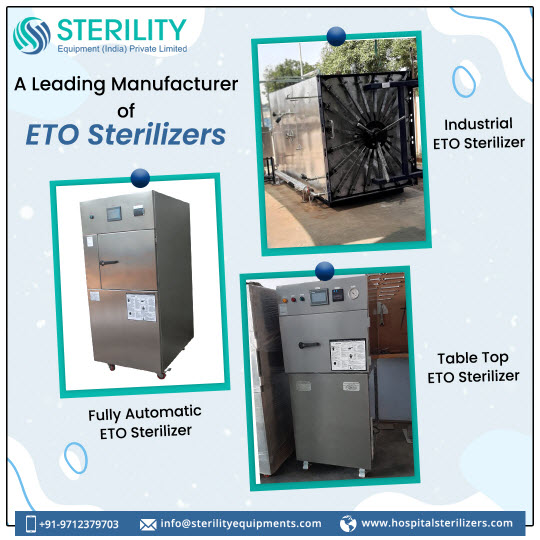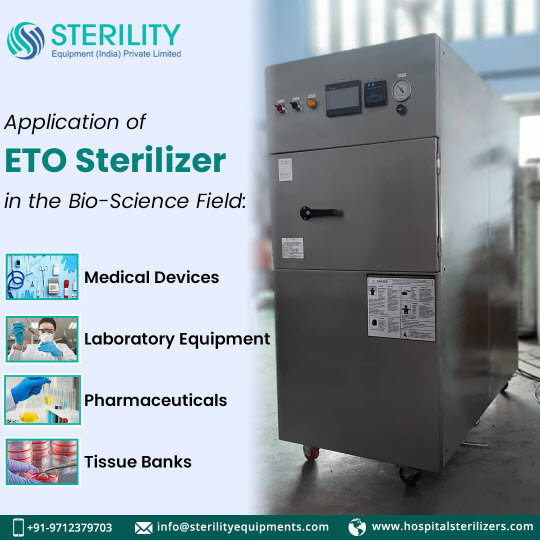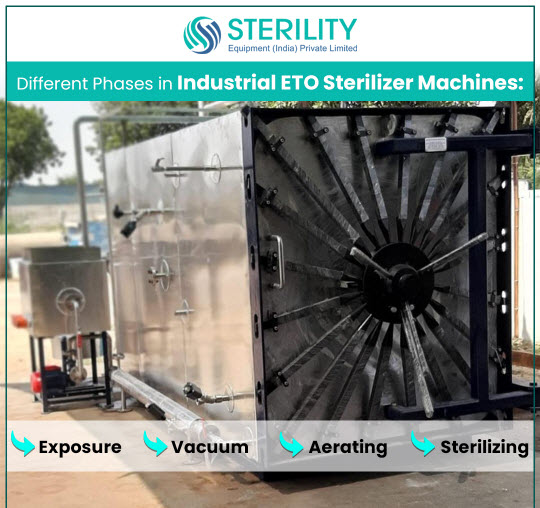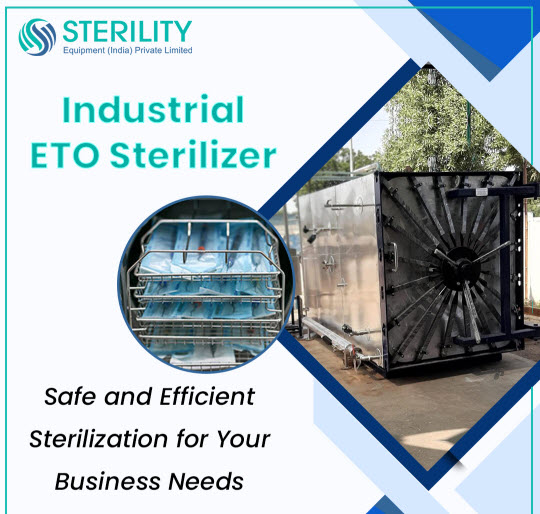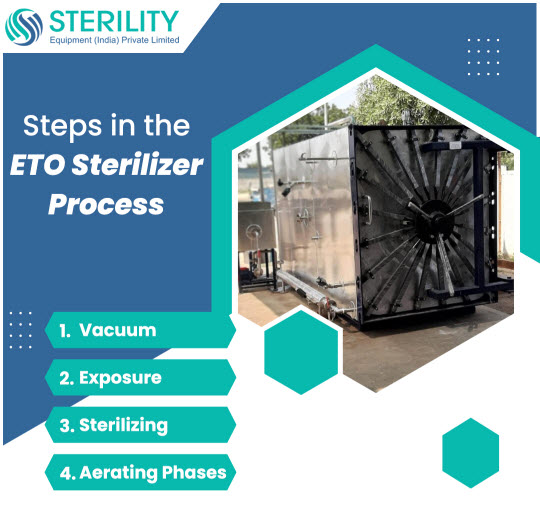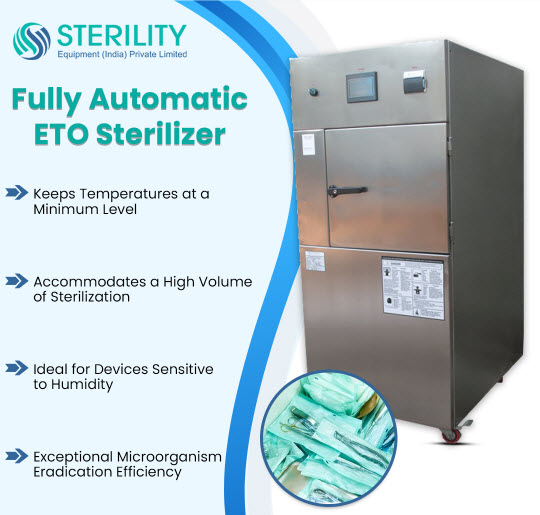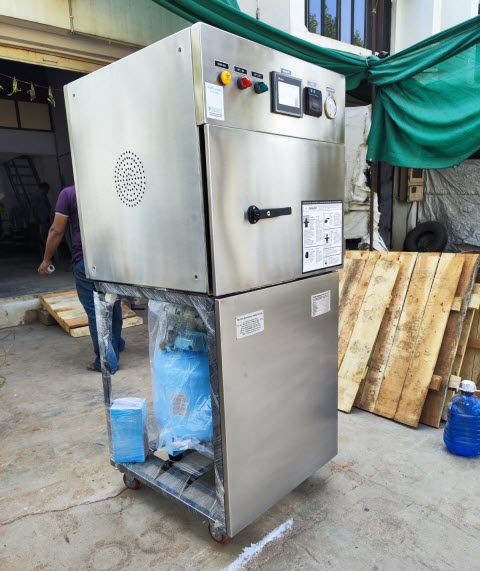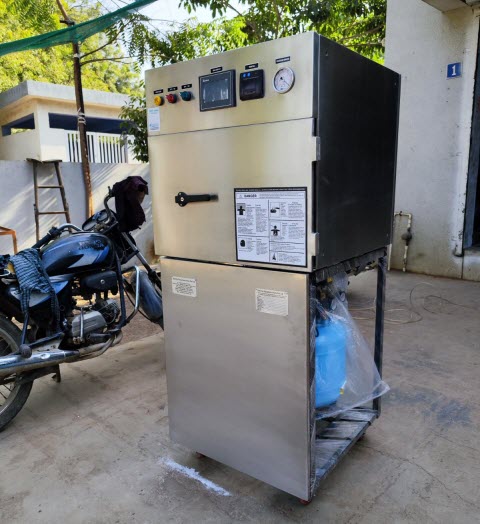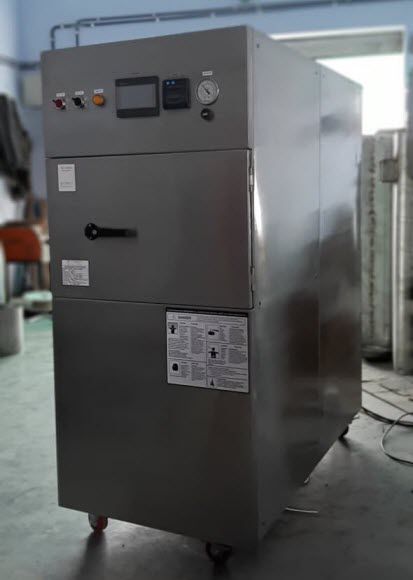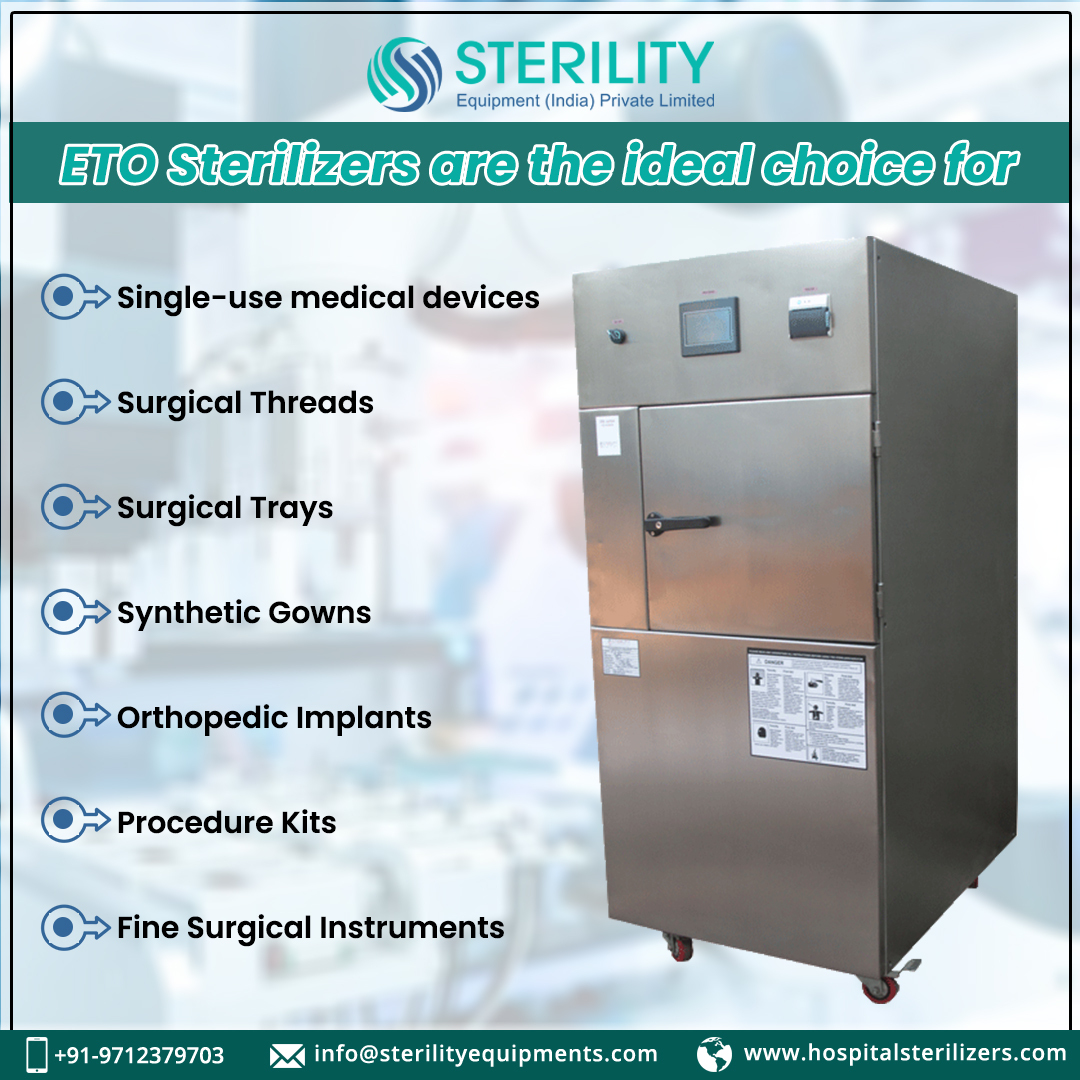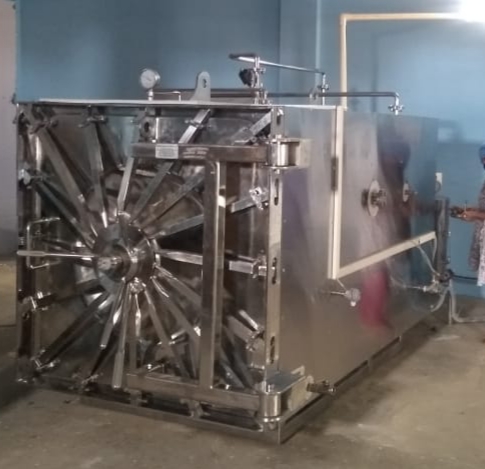Understanding the Benefits of ETO Sterilizers
ETO Sterilizers offer a multitude of advantages, making them highly sought-after for various sterilization processes. Their exceptional ability to eliminate diverse microorganisms sets them apart as a reliable and effective solution, particularly in critical industries like medical and pharmaceuticals. Gaining insight into these unparalleled benefits empowers you to make informed decisions that cater to your unique business requirements.
Exceptional Microorganism Elimination
ETO Sterilizers excel at eradicating a wide range of microorganisms, including bacteria, viruses, and spores. This high-level sterilization effectiveness ensures that medical instruments and equipment are thoroughly disinfected, minimizing the risk of infections and cross-contamination.
Enhanced Safety and Reliability
With ETO Sterilizers, safety is a top priority. The meticulous sterilization process leaves no room for compromise, ensuring that medical items are safe for use on patients. Their reliability and precision contribute to maintaining the highest quality standards for sterilization in healthcare settings.
Versatile Sterilization Applications
ETO Sterilizers can handle a diverse range of materials and instruments, making them versatile and adaptable to various sterilization needs. From delicate surgical equipment to complex medical devices, ETO sterilization can effectively sanitize a wide array of items.
Penetrative Sterilization Properties
The unique properties of ethylene oxide gas enable it to penetrate even the most intricate surfaces and crevices of medical instruments. This thorough sterilization capability ensures complete microbial eradication, making ETO Sterilizers a preferred choice for critical and sensitive equipment.
Compatibility with Heat-Sensitive Items
Unlike other sterilization methods like steam sterilization, ETO sterilization operates at lower temperatures, making it ideal for heat-sensitive items. This compatibility preserves the integrity of delicate instruments and materials, preventing damage due to high temperatures.
Extended Shelf Life for Sterilized Items
ETO Sterilization is known for providing long-term sterility, contributing to the extended shelf life of sterilized items. This attribute is particularly advantageous in healthcare and pharmaceutical industries, where stored instruments must remain sterile until use.
Cost-Effective for Large Loads
ETO Sterilizers are well-suited for handling large loads of medical instruments and equipment in a single cycle. This efficiency not only saves time but also reduces operational costs, making ETO sterilization a cost-effective solution for facilities with high sterilization demands.
A Complement to Other Sterilization Methods
ETO Sterilization complements other sterilization methods like steam sterilization, allowing for a comprehensive approach to ensuring sterile instruments and materials. Combining ETO sterilization with other methods can optimize sterilization protocols and improve overall efficiency.
Eco-Friendly Sterilization
ETO Sterilization utilizes a gas that does not produce harmful byproducts, making it an eco-friendly sterilization method. It minimizes environmental impact while maintaining its exceptional sterilization efficacy.
In conclusion, understanding the myriad benefits of ETO Sterilizers highlights their crucial role in maintaining safety and quality in medical and pharmaceutical industries. From their exceptional microbial elimination capabilities to their versatility and cost-effectiveness, ETO Sterilizers continue to be a trusted choice for ensuring reliable and efficient sterilization processes.
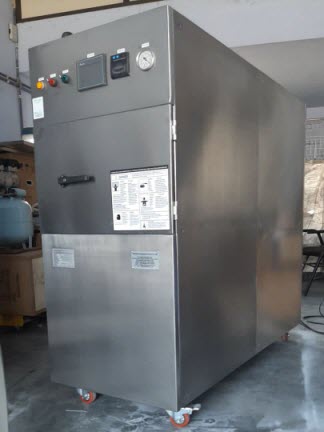
Exploring the Differences Between Used and New ETO Sterilizers
When it comes to choosing between used and new ETO sterilizers, it’s crucial to delve into their disparities. Both options offer unique advantages, and a comprehensive evaluation of their differences is essential in making the right decision for your sterilization needs.
New ETO Sterilizers:
Cutting-edge Technology: New ETO sterilizers come equipped with the latest technological advancements and innovations, ensuring efficient and precise sterilization processes.
Manufacturer’s Warranty: They typically come with a comprehensive manufacturer’s warranty, providing added peace of mind and protection for your investment.
Compliance and Regulations: New ETO sterilizers are designed to meet the most recent industry standards and regulatory requirements, ensuring adherence to stringent quality controls and safety guidelines.
Enhanced Efficiency: Their modern design and features enhance operational efficiency, reducing cycle times and optimizing overall productivity.
Used ETO Sterilizers:
Cost-Effectiveness: Opting for used ETO sterilizers can offer significant cost savings compared to purchasing new equipment, making it an attractive option for businesses with budget constraints.
Proven Performance: Pre-owned sterilizers with a track record of reliable performance can provide reassurance that the equipment has been tested and proven effective.
Immediate Availability: Used sterilizers are readily available, minimizing lead times and allowing for quick implementation into your sterilization processes.
Flexibility and Scalability: Depending on your requirements, used ETO sterilizers can offer more flexible and scalable solutions for specific sterilization needs.
Budget Constraints: Evaluate your budget and consider how it aligns with the cost of new and used ETO sterilizers. Determine which option offers the best value for your investment.
Sterilization Requirements: Assess the specific needs of your facility and the volume of items to be sterilized. Consider if the features of new sterilizers are necessary for your operations or if used ones can effectively meet your sterilization demands.
Long-term Investment: Factor in the expected lifespan of the sterilizer and the potential need for future upgrades or replacements. Balance the initial cost with the long-term value and reliability.
Warranty and Support: Take into account the warranty coverage and after-sales support offered by the supplier for both new and used sterilizers. Reliable support is essential for ensuring uninterrupted and efficient sterilization operations.
In conclusion, exploring the differences between used and new ETO sterilizers is essential in making a well-informed decision. New sterilizers offer cutting-edge technology and compliance with the latest regulations, while used sterilizers present cost-effectiveness and proven performance. Weighing your budget, sterilization requirements, and long-term investment goals will guide you towards choosing the option that optimally aligns with your business needs, ensuring efficient sterilization processes and maximizing the value of your investment.
The Cost Savings of Opting for Used ETO Sterilizers
When it comes to choosing ETO sterilizers, the option of going for used equipment offers an exceptional opportunity for significant cost savings, all without compromising on quality. These pre-owned machines have the capability to deliver the same level of sterilization effectiveness as their new counterparts, making them an affordable and practical choice for businesses seeking to optimize their budget without sacrificing performance.
Cost-Effectiveness:
One of the most significant advantages of opting for used ETO sterilizers is the substantial cost savings they bring. Pre-owned equipment is often available at a fraction of the cost of new sterilizers, presenting a compelling option for businesses with budget constraints or those looking to allocate their resources more efficiently.
Proven Performance:
Used ETO sterilizers with a history of reliable performance demonstrate their effectiveness in real-world settings. These machines have been tested over time and have proven their ability to consistently deliver efficient sterilization results.
Immediate Availability:
Used ETO sterilizers are readily available, allowing businesses to acquire and implement them without the longer lead times associated with purchasing new equipment. This immediate availability can be particularly beneficial when there is a pressing need to enhance sterilization capabilities quickly.
Comparable Quality:
Many used ETO sterilizers in the market have been well-maintained and serviced regularly. When choosing from reputable suppliers, you can find equipment in excellent condition, ensuring that they deliver reliable performance without any compromise in quality.
Budget Optimization:
Investing in used ETO sterilizers frees up budgetary resources that can be allocated to other critical areas of your business. These savings can be reinvested into enhancing other aspects of your medical facility, driving overall operational efficiency and growth.
Cost-Effective Scaling:
For facilities with evolving sterilization needs, used ETO sterilizers offer a cost-effective way to scale operations. Businesses can acquire additional pre-owned machines as the demand increases, providing a flexible and scalable solution without significant financial outlays.
Risk Mitigation:
With well-maintained used ETO sterilizers, the risk of unexpected breakdowns is significantly reduced. Reputable suppliers often perform rigorous inspections and refurbishments before selling pre-owned equipment, ensuring their reliability and performance.
Environmentally-Friendly Option:
Opting for used ETO sterilizers aligns with sustainability efforts. By giving pre-owned equipment a second life, businesses contribute to reducing the environmental impact associated with the production and disposal of new sterilizers.
In conclusion, choosing used ETO sterilizers offers compelling cost advantages without compromising on quality or performance. These pre-owned machines, when acquired from reputable suppliers, present a viable solution for businesses aiming to optimize their budget while maintaining high standards of sterilization effectiveness. Unlock the potential cost savings and efficiency gains of used ETO sterilizers and discover how they can contribute to your business’s success and overall operational excellence.
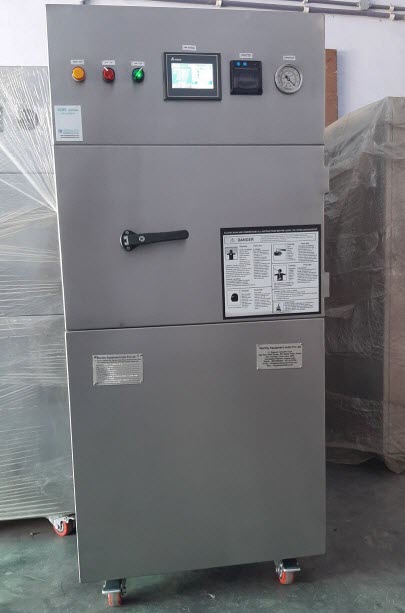
Weighing the Risks Associated with Used ETO Sterilizers
While the cost advantages of used ETO sterilizers may be enticing, it’s crucial to approach the decision with caution and be mindful of the inherent risks involved. One of the primary concerns is safety, as pre-owned equipment may have undergone wear and tear over time, potentially compromising its performance. Additionally, the reliability of used ETO sterilizers can become a critical issue if the machine has not been adequately maintained or inspected before purchase.
To mitigate these risks effectively, conducting a thorough assessment becomes paramount. Engage in meticulous inspections to verify the condition of the used ETO sterilizer, assessing its functionality, components, and overall structural integrity. This step ensures that the machine adheres to industry safety standards and can deliver the level of sterilization efficiency required for your specific applications.
Furthermore, it’s prudent to seek out reputable sellers or suppliers who have a track record of providing high-quality used medical equipment. Researching customer reviews and testimonials can give valuable insights into the supplier’s reliability and the satisfaction level of previous buyers.
Before finalizing the purchase, inquire about the machine’s history, including its previous usage, maintenance records, and any previous incidents or repairs. This information will give you a clearer picture of the sterilizer’s past performance and any potential issues it may have encountered.
Remember that used ETO sterilizers may not come with the same warranty coverage as new equipment. Therefore, it’s essential to understand the seller’s warranty policy and any additional support they offer after the purchase.
In conclusion, while used ETO sterilizers can offer considerable cost benefits, it’s crucial to approach the decision with thoroughness and care. By conducting comprehensive assessments, collaborating with reputable suppliers, and gathering all relevant information, you can confidently weigh the risks and make an informed decision. Prioritizing safety, reliability, and efficiency will ensure that your choice aligns with the highest standards of performance and protection for your sterilization processes.
Ensuring Compliance and Quality with Used ETO Sterilizers
When considering used ETO sterilizers, prioritizing compliance with industry regulations and maintaining stringent quality standards is of utmost importance. Ensuring that the pre-owned equipment meets all necessary requirements guarantees that your sterilization processes adhere to established norms and guidelines.
To safeguard your operations and uphold the integrity of your sterilization procedures, conduct a thorough examination of the used ETO sterilizer’s compliance history. Request documentation and certifications that confirm its compliance with relevant regulations and standards. This may include certifications from regulatory bodies and previous inspection reports.
Evaluating the sterilizer’s performance history is equally essential. Request information regarding its past usage, maintenance records, and any notable incidents or repairs. A history of reliable performance and proper maintenance demonstrates the equipment’s ability to consistently deliver effective sterilization results.
Additionally, seek out sellers or suppliers who have a reputation for providing high-quality, compliant used ETO sterilizers. Customer reviews and feedback can offer valuable insights into the supplier’s reliability and the satisfaction level of their previous customers.
Verifying the equipment’s condition and functionality through thorough inspections is essential in ensuring compliance and quality. Engage qualified technicians to assess the sterilizer’s components, safety features, and overall performance. This step helps identify any potential issues or deficiencies that may affect its compliance and quality.
Lastly, consider the availability of ongoing support and service from the supplier after the purchase. Having access to reliable maintenance services ensures that the used ETO sterilizer continues to meet compliance standards and maintains its quality over time.
By prioritizing compliance and quality in your selection process, you can confidently incorporate a used ETO sterilizer into your operations. Adhering to industry regulations and maintaining stringent quality standards will not only safeguard your business but also contribute to the safe and effective sterilization of medical instruments and equipment.
Combining New and Used ETO Sterilizers for Cost-Effective Solutions
Embracing a hybrid approach that combines both new and used ETO sterilizers can unlock a cost-effective solution that benefits businesses in various ways. By strategically integrating both types of machines into your sterilization processes, you can optimize operational efficiency while effectively managing expenses.
New ETO sterilizers are equipped with the latest technology and features, ensuring cutting-edge performance and meeting the most recent industry standards. By incorporating new units, you can handle critical tasks and ensure high precision in demanding sterilization procedures.
At the same time, opting for used ETO sterilizers can lead to significant cost savings without compromising on sterilization effectiveness. Pre-owned equipment with a proven track record of reliable performance can handle less demanding tasks, efficiently extending the lifespan of your new sterilizers.
To strike the right balance between new and used units, carefully assess your sterilization needs and frequency of use for specific equipment. Allocate new sterilizers for critical and frequent tasks, while assigning used units for less demanding procedures.
Implementing a well-structured maintenance schedule for both new and used ETO sterilizers is essential to optimize their performance and prolong their operational life. Regular servicing ensures that each machine performs at its best, minimizing the risk of unexpected breakdowns and maximizing productivity.
Partnering with a trusted supplier can play a crucial role in the success of this hybrid approach. Choose a supplier with a diverse inventory of new and high-quality used ETO sterilizers. Their expertise can guide you in finding the right balance between new and pre-owned equipment to fit your budget and requirements.
By adopting this innovative approach, you can enjoy the cost advantages of used equipment while benefiting from the cutting-edge features of new sterilizers. Striking the right balance between the two types of machines empowers your business with a cost-effective and efficient sterilization solution. Explore the possibilities of combining new and used ETO sterilizers today and revolutionize your sterilization processes.
The Future of ETO Sterilizers: Technological Advancements and Trends
As technology progresses, the field of ETO sterilizers is poised for transformative changes, paving the way for exciting innovations and emerging trends. Staying abreast of these developments is essential for businesses seeking a competitive edge in the realm of sterilization.
Technological advancements in ETO sterilizers are focused on enhancing efficiency and precision. Automation is becoming increasingly prevalent, streamlining the sterilization process and reducing human intervention. Improved sensors and monitoring systems ensure precise control, optimizing sterilization outcomes and safety.
The integration of connectivity and data management systems is another significant trend. Cloud-based solutions enable real-time monitoring of sterilization cycles, performance analytics, and remote access for troubleshooting. This connectivity enhances process control and simplifies compliance reporting.
Advancements in materials and designs contribute to increased durability and sustainability. Manufacturers are exploring eco-friendly materials and energy-efficient features, reducing the environmental footprint of ETO sterilizers while ensuring their longevity and reliability.
The concept of point-of-care sterilization is gaining momentum. Compact and portable ETO sterilizers enable sterilization at or near the point of use, enhancing convenience and minimizing the turnaround time for critical medical procedures.
The future also holds promise for sterilizers with enhanced compatibility. As medical devices and equipment become more complex and diverse, sterilizers capable of accommodating a wide range of materials and instruments will be increasingly sought after.
Integration with artificial intelligence (AI) and machine learning is on the horizon. These technologies can analyze vast amounts of data to optimize sterilization processes, predict maintenance needs, and identify potential issues, ultimately improving operational efficiency and cost-effectiveness.
Moreover, regulatory bodies are continuously updating guidelines to ensure the highest standards of sterilization safety. Keeping abreast of these changes is vital for compliance and for maintaining the reputation and trust of your business.
To harness the potential of the future of ETO sterilizers, collaborate with reputable suppliers and manufacturers known for innovation and quality. Regularly attend industry conferences and stay informed through publications and online resources to remain at the forefront of these developments.
Embracing technological advancements and staying informed about emerging trends will empower your business with the tools to deliver cutting-edge sterilization services. Anticipate the transformative future of ETO sterilizers and leverage these innovations to positively impact your operations and elevate your business to new heights.
Making an Informed Decision: Factors to Consider When Choosing ETO Sterilizers
Choosing the ideal ETO sterilizer requires a meticulous evaluation of multiple factors to ensure the best fit for your business. Consider the following essential aspects before making a decision:
Specific Sterilization Requirements:
First and foremost, assess your unique sterilization needs. Determine the types of medical instruments or equipment you’ll be sterilizing, the volume of items to be processed, and the required sterilization cycle times. Ensure that the chosen sterilizer can accommodate your specific applications efficiently.
Budget Constraints:
Your budget is a critical factor that influences your options. Determine a realistic budget and explore sterilizer models that align with your financial capabilities. Keep in mind that used ETO sterilizers can provide cost-effective alternatives without compromising on quality.
Available Space:
Consider the available space in your facility for the sterilizer. Measure the dimensions of the designated area to ensure the chosen sterilizer fits comfortably. Some sterilizers may require additional clearances for ventilation and maintenance, so plan accordingly.
Future Scalability:
Anticipate your business’s growth and future needs. Choosing a sterilizer with scalability features allows you to expand your operations seamlessly as your demands increase. This future-oriented approach saves you from needing to replace the sterilizer sooner than necessary.
Sterilization Cycle Time and Throughput:
Efficiency is crucial in healthcare settings. Evaluate the sterilizer’s cycle time and throughput capacity to ensure it can meet your facility’s demands while maintaining consistent performance. Faster cycle times can significantly impact overall productivity.
Compliance with Regulatory Standards:
Ensure that the ETO sterilizer complies with relevant industry regulations and standards. Verify if the equipment meets the requirements set by authorities like the FDA or ISO. Adhering to these guidelines guarantees safe and effective sterilization practices.
Maintenance and Service Support:
Evaluate the manufacturer’s reputation for customer support and after-sales service. A reliable supplier should offer maintenance contracts, prompt technical assistance, and readily available spare parts, ensuring your sterilizer operates optimally over time.
User-Friendly Interface:
An intuitive and user-friendly interface simplifies the operation of the sterilizer and reduces the risk of errors. Training staff members become more manageable, ensuring smooth and consistent sterilization processes.
By carefully weighing these critical factors, you can make an informed decision that aligns with your business goals and optimizes your sterilization operations. Conduct thorough research, seek advice from industry experts, and partner with reputable suppliers to find the perfect ETO sterilizer that meets your specific needs and expectations.
ETO Sterilizers Maintenance: Best Practices for Prolonged Efficiency
Proper maintenance is key to ensuring the prolonged efficiency and optimal performance of your ETO sterilizers. By implementing best practices for regular inspections and preventive measures, you can extend the lifespan of your equipment and reduce the risk of unexpected breakdowns. Discover essential tips to keep your sterilizers operating at their best:
Regular Inspections:
Schedule routine inspections to identify any signs of wear, damage, or malfunction. Check critical components, such as the sterilization chamber, seals, valves, and filters. Inspect the control panel for proper functionality and ensure that safety features are functioning as intended.
Calibration and Testing:
Regularly calibrate your ETO sterilizer to maintain accurate temperature and pressure readings during sterilization cycles. Conduct performance tests to verify that the sterilizer meets the required sterilization parameters and achieves the desired sterility assurance level.
Preventive Maintenance:
Adopt a proactive approach to maintenance by performing preventive tasks at scheduled intervals. This includes replacing worn-out parts, such as gaskets and filters, before they compromise the sterilizer’s performance. Preventive maintenance significantly reduces the likelihood of costly breakdowns and ensures consistent efficiency.
Proper Cleaning and Decontamination:
Thoroughly clean and decontaminate the sterilization chamber and other critical areas after each use. Regular cleaning prevents the buildup of residue, which can affect sterilization effectiveness and compromise the integrity of medical instruments.
Staff Training:
Train your staff on proper sterilizer operation and maintenance procedures. Knowledgeable personnel can identify and address potential issues promptly, ensuring safe and effective sterilization processes.
Manufacturer’s Guidelines:
Strictly adhere to the manufacturer’s guidelines for maintenance and servicing. Follow the recommended schedule for maintenance tasks, and use authorized replacement parts to preserve the equipment’s warranty and performance.
Documentation:
Maintain comprehensive records of all maintenance activities, inspections, and repairs. Documentation helps track the sterilizer’s history and facilitates compliance with regulatory requirements.
Emergency Preparedness:
Develop a contingency plan for emergencies, including unforeseen breakdowns. Having a backup sterilization plan ensures continuity of critical medical procedures and minimizes disruptions in operations.
Environmental Conditions:
Ensure that the sterilizer is located in an environment with proper temperature and humidity control. Extreme environmental conditions can adversely affect the equipment’s performance and longevity.
By incorporating these best practices into your sterilizer maintenance routine, you can ensure that your ETO sterilizers operate optimally, maintain their efficiency, and provide reliable sterilization results. Proper maintenance not only extends the equipment’s lifespan but also contributes to the safety and quality of medical instrument sterilization in your facility.
Partnering with Trusted Suppliers: Ensuring Quality ETO Sterilizers
Acquiring ETO sterilizers from a reputable and trusted supplier is paramount to ensuring the reliability and quality of your equipment. A reliable supplier not only provides top-notch products but also offers proper certifications and warranties to back their offerings. Learn how to assess and choose a supplier that meets your expectations and delivers exceptional products and services.
Reputation and Experience:
Research the supplier’s reputation and track record in the industry. Look for suppliers with years of experience and a proven history of providing high-quality ETO sterilizers. Customer reviews and testimonials can provide valuable insights into the supplier’s reliability and customer satisfaction.
Certifications and Compliance:
Verify that the supplier’s ETO sterilizers meet the necessary certifications and comply with industry regulations. Essential certifications may include FDA approval, ISO standards, and other relevant quality certifications. Ensuring compliance guarantees that the equipment adheres to the highest standards of safety and performance.
Product Selection:
Evaluate the supplier’s range of ETO sterilizers. A reputable supplier should offer a diverse selection of equipment to accommodate various sterilization needs and capacities. Choose a supplier with a comprehensive product portfolio that can cater to your specific requirements.
Warranty and Support:
Inquire about the supplier’s warranty policies and after-sales support. A reliable supplier should offer comprehensive warranties that cover the equipment’s performance and functionality for a specified period. Additionally, prompt technical support and access to spare parts are crucial for uninterrupted sterilizer operation.
Customization Options:
Consider whether the supplier can accommodate customizations to meet your unique sterilization needs. Some applications may require specific modifications to the sterilizer, and partnering with a supplier that can provide tailored solutions adds value to your investment.
Value-added Services:
Look for suppliers that offer value-added services, such as installation, training, and maintenance contracts. These services can enhance the overall efficiency and longevity of your ETO sterilizers, ensuring seamless integration into your operations.
Transparent Pricing:
Request detailed pricing information from the supplier, including any additional costs for services, delivery, or installations. Transparent pricing helps you make informed decisions based on your budget constraints and overall project costs.
Customer Support and Communication:
Assess the supplier’s customer support and communication channels. A responsive and accessible supplier will address your queries and concerns promptly, fostering a positive and trustworthy business relationship.

